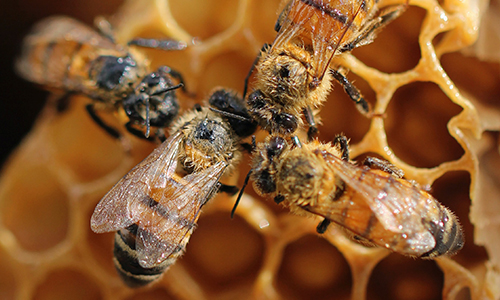Earlier this week, Maharashtra Chief Minister Uddhav Thackeray and Nationalist Congress Party (NCP) leader Sharad Pawar released a book published by the state government, titled ‘Maharashtra-Karnataka Seemavad: Sangharsh Aani Sankalp’ (Maharashtra-Karnataka Boundary Dispute: Struggle and Pledge). The book is a collection of articles, news, and other material on the demand that Marathi-speaking areas in Karnataka should be integrated into Maharashtra.
Until the Supreme Court gives is verdict on the dispute, the areas should be declared a Union Territory, Thackeray said.
Pawar was more circumspect, saying that the government must make all legal efforts to ensure a favourable verdict in the apex court.
The matter has been in the Supreme Court since 2004.
The dispute
This long smouldering inter-state dispute resurfaces from time to time, rather like the issue around the demand for the renaming of Aurangabad. Maharashtra has staked claim to over 7,000 sq km area along its border with Karnataka, comprising 814 villages in the districts of Belagavi (Belgaum), Uttara Kannada, Bidar, and Gulbarga, and the towns of Belagavi, Karwar, and Nippani. All these areas are predominantly Marathi-speaking, and Maharashtra wants them to be merged with the state.
The genesis of the dispute lies in the reorganisation of states along linguistic and administrative lines in 1956.
The erstwhile Bombay Presidency, a multilingual province, included the present-day Karnataka districts of Vijayapura, Belagavi, Dharwad, and Uttara Kannada. In 1948, the Belgaum municipality requested that the district, having a predominantly Marathi-speaking population, be incorporated into the proposed Maharashtra state.
However, The States Reorganisation Act of 1956 made Belgaum and 10 talukas of Bombay State a part of the then Mysore State (which was renamed Karnataka in 1973). While demarcating borders, the Reorganisation of States Commission sought to include talukas with a Kannada-speaking population of more than 50 per cent in Mysore. But the opponents of the regions inclusion in Mysore have maintained that in 1956, Marathi-speakers outnumbered Kannada-speakers in those areas.
Political parties in Maharashtra are united on the merger of the border areas with the state. The dispute features in every election manifesto of the Congress, NCP, Shiv Sena, and BJP. Over the last six decades, every Governor’s address (which outlines the state government’s policies and programmes) to the joint session of the Maharashtra Assembly and Council has mentioned the border dispute to loud applause from members across parties.
Recent incidents
This is not the first time that this matter has arisen in the last 13 months of the Maha Vikas Aghadi (MVA) coalition government.
Bus services between Kolhapur (Maharashtra) and Belgaum (Karnataka) had to be suspended for a few days following tensions that flared on both sides of the border after Chief Minister Thackeray referred to the contentious areas as Karnataka-occupied Maharashtra in the Assembly.
He also named two senior ministers, Eknath Shinde and Chhagan Bhujbal, to a co-ordination committee to oversee the expeditious resolution of the case in favour of Maharashtra in the Supreme Court.
Late last year, the Maharashtra government asked all ministers to wear black bands on November 1, which is celebrated in Karnataka as Rajyotsava or state Formation Day, to express support for Marathi-speaking people in Karnataka.
Thackeray reiterated his commitment to redrawing Maharashtra’s borders to include areas that now lie in Karnataka on January 17, which is observed in Maharashtra as Martyrs’ Day, while paying tributes to those who died in the 1956 border struggle to join Maharashtra.
Deputy Chief Minister Ajit Pawar echoed the pledge.
The Mahajan Commission
The BJP government in Karnataka has accused Maharashtra of seeking to incite violence on the border dispute, and Karnataka Chief Minister B S Yediyurappa has vowed he would not part with an inch of land. The Mahajan Commission had long ago settled the dispute, Yediyurappa said, condemning Maharashtra.
The Mahajan Commission was set up by the Government of India in October 1966 to look into the border dispute. In its report submitted in August 1967, the Commission, led by former Chief Justice of India Mehr Chand Mahajan, recommended that 264 villages should be transferred to Maharashtra, and that Belgaum and 247 villages should remain with Karnataka.
Maharashtra rejected the report, calling it biased and illogical, while Karnataka welcomed it. Despite demands from Karnataka, the Centre never implemented the recommendations of the report.
Earlier this week, Sharad Pawar said the report was 100 per cent against Maharashtra.
The BJP’s dilemma
At a time when the BJP has tried to corner Thackeray on the issue of renaming Aurangabad, challenging him to act on the old promise, the border row has handed the Shiv Sena an opportunity to hit back at its former ally.
The Maharashtra BJP had lain low for long, shying away from saying anything that would pit it against its own government and party in Karnataka. However, former Chief Minister Devendra Fadnavis has now said that the Maharashtra BJP wants that the predominantly Marathi-speaking border areas should be merged with Maharashtra.
Irrespective of the party in power, both states have from the beginning struck to their positions. The Maharashtra BJP’s stand remains unchanged, Fadnavis has said.
Recent Posts
- The Solar System is positively lousy with magnetic fields. They drape around (most of) the planets and their moons, which interact with the system-wide magnetic field swirling out from the Sun.
- Pregnant people cannot register for a Covid-19 vaccine prior to 14 weeks’ gestation.
- Mikel Arteta was not consulted over Arsenal’s decision to appear Amazon’s All or Nothing documentary this season
- Singapore should embrace openness and equip the people with the experience and skills to succeed, said Mr Heng.. Read more at straitstimes.com.
- Down on an atomic level, glass is a jumbled mess of atoms, which makes it easily prone to distortion and cracking. Now, chemists have discovered how to arrange the atoms within glass in such a way, the resulting material can even rival the strength o

